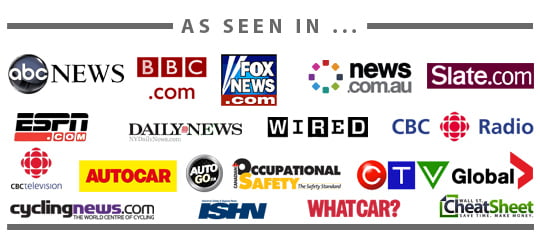Safety Meeting Planner and Agenda
Check Your Tires!
Meeting Leader:
- Prepare in advance to make this meeting effective.
- Print and read over this entire agenda.
- Think about how you want to lead the meeting.
- Is there anything that is specific to your company or operation that you can include to personalize the information?
- Review the video for this session.
- Save the link to the video in your ‘Favourites’ folder on your browser for easy access.
- Open and then minimize the viewer just before the meeting to make the video introduction smooth.
Start Your Meeting!
Opening Statement:
The only thing that keeps you on the road is your tires so their condition is critical to safety. You should check them regularly.
Questions for this Meeting:
Q: When you check your tires, what should you look for/check?
Answers can be:
- Tread depth and condition: there are ‘wear markers’ that will show when your tire is worn to the point of needing replacement.
- Check for damage or foreign material/objects: cuts in the tread or sidewall, imbedded rocks, metal or other sharp objects.
- Ensure that you are using the right type of tire for your application. If off highway use is intended, you should look for the ‘M & S’ mark for mud and snow. For winter use, dedicated snow tires will have the snowflake symbol moulded into the sidewall.
- Tire pressure
- Can you think of others?
Q: Who know where to look to find out the correct tire pressure?
Tailgate Tips:
First of all, you can’t tell if your tire is correctly inflated just by looking at it. If your tire looks low, it is already dangerously underinflated. You have to put a gauge on the valve stem and actually measure the pressure.
Many people think that the pressure on the tire sidewall is the right pressure to inflate the tire to. This is not correct! The tire sidewall will indicate the maximum safe inflation and weight carrying capacity for the tire and it’s a good thing to know and compare to the tire specification for your vehicle. It is not uncommon for budget minded purchasers to install cheaper tires that are not rated for a high enough load capacity. (You can buy a load range ‘B’ or ‘E’ tire of the same size but the ‘E’ is heavier duty and will be rated at a higher load capacity and maximum inflation).
The vehicle manufacturer determines what the right tire size and pressure should be based on the vehicle weight and intended use including load capacity (GVW) this information will be noted on the driver door or door frame or in the glove box or in the operator manual. This is the pressure that you should inflate to. Putting too much or too little air in the tire will affect the contact patch and traction that the tire is able to generate.
Introduce the Video:
Spencer McDonald discusses the importance of tire inspections including: tire pressure check, inspection for wear and damage during pre-trip inspections (to reduce the incident frequency) and improve safety performance. Correct tire selection for application is also highlighted.
Practical Challenge:
If you have a tire to bring into the shop or classroom/meeting room, have everyone find the markings that identify maximum pressure and load range, capacity, etc.
Take your group out and inspect the tires on everyone’s vehicle including tire pressure. Ask each person to find the vehicle sticker that notes correct pressure.
Discuss the findings and variation found in tire pressures.
Then correct the inflation of everyone’s tires if necessary!
Have a safe day!









